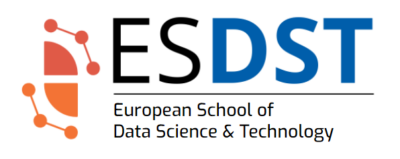Path to defining a business problem
A business problem is defined as a current or long term challenge faced by a business which prevents an organisation in implementing a strategy or achieving a goal, however defining a business problem is not as easy as the definition of a business problem. It takes time, patience, experience and knowledge to define the most integral part of a data science project.
It is a known saying that, “well begun, is half done”, in any data science project it is the most important step, defining the correct business problem leads the way to an understandable analytical problem which in turn paves way for the steps we are going to apply in the solution.
Not all problems faced in a business requires a data science backed solution, it becomes extremely pertinent for a data scientist to validate the order in chaos of data.
Delivering the unstated
When a client comes looking for a solution for a real-world problem, they are usually unaware of the factors contributing to the problem. It becomes our job as data scientists, to deal with the unknown, swimming in uncharted waters to figure out the root cause of the problem. When a client comes asking for a solution to problem “A”, it becomes imperative for a data-scientist to know how “B” supplements “A”, which in turn helps the client solve problems “B” and “C”, making the job of a data scientist complete.
Henry Ford once said, ‘If I’d ask customers what they wanted, they would’ve told me a faster horse.’ People don’t know what they want until you show it to them. That’s why a data-scientist should never rely only on market research. The task is to read things that are not yet on the page, but reading between the lines on that page.
It is not the client’s job to know how you can help them do what they want to get done. It is the responsibility of the data-scientist to decrypt what their customers are trying to accomplish. This thinking is popularized by the “Jobs to be Done” framework. The essence of this framework is that you should be designing your offerings around jobs that your customers are trying to perform, not around the requirements they bring forward.
Domain Proficiency
Perhaps, the most burning question in today’s data-science community is towards handling the misguidance provided by the “learn Data Science in a month and top the Kaggle leaderboards!” courses. These practices, rather than making people competent to be employable in a Data Science role, end up only churning out incompetent “programmers” who think a simple Random Forests from the sklearn-learn library is a solution to all problems!
It is a fact that basic picking up skills like Statistics, Linear Algebra, Extensive Mathematics & coding skills are some of the harder skills to pick up, but a working knowledge of business in the form of minimum viable subject matter expertise cannot be neglected by a Data Scientist. On the contrary, any SME should be considered king! Especially with extensive experience working in a specific field it could potentially be the most valuable skill in his/her bag.
So why is proficiency in the domain so important for data scientists? Simply put, no data scientist can unlock the full power of any algorithm without proper knowledge about the field where the data comes from. A level of expertise in the area can vastly improve the accuracy of the model. This is why data scientists are usually well-informed in the different areas they work in. They may not be experts in everything there is to know but a good data scientist usually focuses on more than one area of expertise. Domain knowledge is the deciding factor in making bad models good and good models great in the data science world.
Data Science & Real World
Applications of Data Science in the real world have not evolved overnight. With increased computing power and cheaper storage, outcomes which used to take several hours to process can now be predicted in minutes.
The applications of data science are virtually limitless in today’s world and as every day passes by, the applications are increasing manifold. We can apply data science to enhance, complement, predict and/or indicate our results to any field of our choosing. A few fields that have increased intervention of data science in their day to day activities are
Healthcare
Medical Image Analysis: Procedures such as detecting tumors, artery stenosis, organ delineation employ various different methods and frameworks like MapReduce to find optimal parameters for tasks like lung texture classification. It applies machine learning methods, support vector machines (SVM), content-based medical image indexing, and wavelet analysis for solid texture classification.
Drug Development: With the vaccine against the pandemic Corona-virus created in record time across the globe, data analytics played a pivotal role in making this happen, some of the major vaccine challenges that were addressed with data analytics include:
- accelerated process development
- developed robust scale-up and tech transfer methods
- manufacturing success improving manufacturing processes
Banking and Finance
Detection of Frauds: Perhaps the most widely reiterated use-case of data science in the BFSI sector, models of fraud detection can be tweaked to detect a wide range of frauds from tax frauds, credit-card fraud, transactional frauds etc. With the intervention of technology and the types of frauds in the BFSI sector skyrocketing at an exponential rate, banking institutions have started investing heavily in leveraging data science to solve issues.
Credit Scoring: Credit scoring is another application of Data Science that helps check the financial score of an individual. This credit score is rated out of 10 and helps financial institutions make decisions on size, duration and rate of interest associated to a loan sanctioned.
Manufacturing industry
Many manufacturers depend on data science to create forecasts of product demand. It helps them in optimizing supply chains and delivering orders without risk of over/under-ordering.
Data science can help increase savings for a manufacturing company especially by complementing supply chain optimization. It can help minimize the risk that parts won’t be delivered and stocked on time. Data science in supply chain optimization takes into consideration many factors that can have an influence on the entire process, for example, shipping costs, weather, material availability, market scarcity etc.
Companies can leverage data science to analyze the needs and behavior of customers. The results of this analysis are crucial in understanding what products enjoy the highest demand on the market – which in turn translates into an increase in the number of goods sold. Sales forecasting is an extremely helpful tool in the value chain.
Retail Industry
Customer Analytics is not a new term in the retail industry, organizations have been using knowledge about their customers for centuries to target them with customized solutions. With the advent of data science, handling the increased size of customer base has just become easy. Data science apps can manage promotions and discounts in real-time, this in turn could help in selling out old products or creating interest in the new products. Another use case for leveraging data science can be to scan the whole social media network to forecast the products that will be in-demand in the near future and promote exactly the same products to the market.
There’s so much more to data science! With tons of real world implementations. The world is still at a nascent stage with utilizing data science. There is still a long way to go before saturation.

